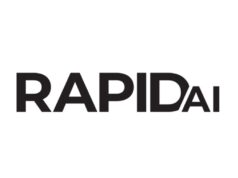Doctors at University Hospital La Timone, Marseille, France, have used their new Leksell Gamma Knife Icon system to treat a metastasis in the brain of a 71-year-old female patient.
This single-session treatment was the first time La Timone physicians had harnessed the system’s advanced motion management and imaging capabilities to enable therapy using mask-based head fixation instead of the traditional rigid stereotactic frame. With Icon, La Timone physicians are predicting a significant increase in the volume of patients suitable for frameless Gamma Knife radiosurgery.
In the days following, doctors treated three additional patients with metastases using the same method. The hospital then achieved another Icon milestone—its first patient to begin frameless, multi-session (hypofractionated) treatment of a benign tumour.
“This 77-year-old female patient had a cavernous sinus meningioma that was too close to the optic nerve and chiasm to treat with a single high dose—it would have been too high of a dose to avoid threatening these sensitive structures,” says professor Jean Regis, a neurosurgeon and programme director for University Hospital La Timone’s Gamma Knife programme, which launched traditional frame-based Gamma Knife radiosurgery treatments with Icon in mid-July. “Therefore, she received a hypofractionated treatment, which divided her therapy into five sessions over five days to decrease the risk of injuring visual pathways.”
When performing frameless Gamma Knife radiosurgery with Icon, it is crucial that patient motion be managed and that the patient’s position can be precisely reproduced in hypofractionated treatments.
Gamma Knife Icon addresses both of these imperatives. Icon provides an integrated cone-beam computed tomography (CBCT) workflow that enables doctors to check the patient’s position against planning images. After a thermoplastic mask is custom-fitted to the patient’s head, an initial CBCT is performed to obtain a reference image, which is then fused with a magnetic resonance imaging (MRI) image to enable the clinician to develop the plan. The patient is then placed on the treatment couch with the mask.
“Because the patient is never precisely in the same position as in these first scans, you acquire a new CBCT scan,” Regis explains. “In a few seconds, the GammaPlan software automatically adapts the plan to the new position of the patient’s head and displays the dose distribution before and after this automated recalculation. This allows the physician to identify any discrepancies between the initial plan and the recalculated plan according to the new patient position. It is important to reiterate that this is a plan correction, not physically correcting the patient’s position. So far, the differences in the plan—before and after adaptation to the patient’s latest position—have been clinically insignificant, so we have not rejected any of the adapted plans.”
During treatment, patient motion is managed through the high-definition motion management system, which monitors the patient’s head position via infrared tracking of markers.
“If the patient coughs or moves her head and that motion exceeds a safety threshold, the system automatically stops delivering the radiation,” he observes. “This is critical feature for patient safety in these frameless treatments. The on-the-fly intrafraction, automated adaptation of the planning to patient position is a new and interesting capability of Icon.”
Hospital La Timone has so far used Leksell Gamma Knife Icon to treat a total of 33 patients using either frame-based or frameless methods.












